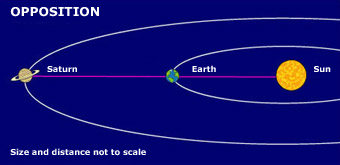 The Earth and other planets in the Solar system do not own a particular lot in the universe. With no permanent address in space, thus they were termed as wanderers. Positioning has an apparent effect on the planetary observation.
The Earth and other planets in the Solar system do not own a particular lot in the universe. With no permanent address in space, thus they were termed as wanderers. Positioning has an apparent effect on the planetary observation.
In Positional Astronomy, two celestial bodies are viewed from a particular place while on opposite sides of the sky. Distinctly, two planets are considered in opposition to each other if solar elongation (the measurement of the angle between a planet and the Sun) of 180o is present– which is considered maximum elongation. In simplest terms, Opposition is when a planet is opposite the Sun in the Earth’s sky, or occurs when the Earth is situated between the planet and the Sun.
The point of reference is always the sun. The superior planets such as Mars, Jupiter, Saturn, Uranus, and Neptune, whose orbits lie external to the earth, can be in opposition to the sun. The excellent time to view a planet is during solar elongation, since it rises when the sun sets and is visible throughout the night, setting as the sun rises. On the other hand, Inferior planets, such as Mercury and Venus have different elongation periods than superior planets, which are further distant from the Sun than the Earth.
